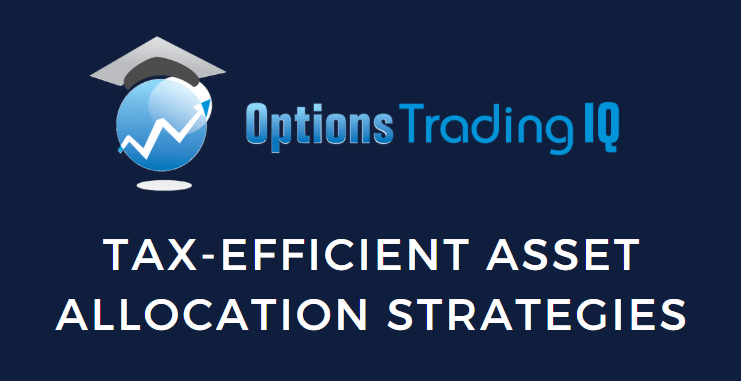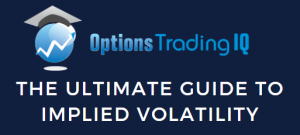

Contents
-
-
-
-
- Introduction: Why Tax Efficiency Matters For Investors
- Asset Location: Placing Investments for Maximum Tax Efficiency
- Tax-Loss Harvesting: Offsetting Gains With Losses
- Tax-Efficient Rebalancing
- Investing In Tax-Efficient Funds
- Municipal Bonds: Generating Tax-Free Income
- Conclusion: Building A Tax-Efficient Portfolio
-
-
-
Introduction: Why Tax Efficiency Matters For Investors
Tax-efficient asset allocation is a crucial strategy to help investors minimize the erosion of returns caused by taxes.
While asset allocation—deciding the right mix of stocks, bonds, and other assets—is fundamental for long-term success, factoring in tax implications can further enhance after-tax returns.
By applying tax-efficient techniques, investors can make their portfolios work harder over time.
This article covers essential strategies to optimize tax efficiency in your portfolio, helping you reduce tax liabilities and retain more of your gains.
Asset Location: Placing Investments For Maximum Tax Efficiency
Asset location is the practice of placing specific asset types in accounts best suited to their tax characteristics.
A gain on asset can be taxed as ordinary income or capital gain.
By strategically placing tax-inefficient assets, such as bonds, into tax-deferred accounts, and tax-efficient assets, like stocks, in taxable accounts, investors can reduce their tax burden.
Tax-deferred accounts, such as 401(k)s or traditional IRAs, are ideal for holding bonds, REITs, and high-dividend stocks, as interest and dividends can grow without immediate tax impact.
In contrast, taxable accounts are more suitable for tax-efficient assets, such as index funds and growth stocks, due to favorable long-term capital gains rates, Roth IRA’s are well-suited for high-growth assets since withdrawals are tax-free, maximizing long-term tax advantages.
For example, placing corporate bonds in a traditional IRA defers taxes on interest income, while holding low-turnover index funds in a taxable account takes advantage of lower capital gains rates.
Tax-Loss Harvesting: Offsetting Gains With Losses
Tax-loss harvesting involves selling investments at a loss to offset gains from other investments, which reduces overall tax liability.
Investors can use realized losses to offset gains, as well as to reduce up to $3,000 of ordinary income each year.
Any losses that are not used can be carried forward to future tax years.
By offsetting capital gains with losses from underperforming assets, investors can reduce their tax bills.
However, it is essential to be aware of the wash sale rule, which prohibits repurchasing identical assets within 30 days to maintain the tax benefit of losses.
For instance, if a stock sale generates a $10,000 gain, an investor might offset this by selling another stock for a $10,000 loss, minimizing taxes owed.
Any remaining losses can then be applied to future gains or income, further enhancing tax efficiency over time.
Tax-Efficient Rebalancing
Rebalancing helps maintain your target asset allocation but can also incur taxes in a taxable account.
Tax-efficient rebalancing techniques can reduce tax exposure while keeping your portfolio aligned with your goals.
Rebalancing within tax-deferred accounts, such as IRAs and 401(k)s, can avoid triggering taxes on gains, making it an ideal approach.
Alternatively, instead of selling assets in taxable accounts, directing new contributions toward underweighted asset classes can achieve balance without incurring taxes.
Additionally, when selling assets in a taxable account is necessary, investors can prioritize selling underperforming assets to harvest losses and offset any gains.
For example, if the equity portion of a portfolio grows beyond its target, using dividends or new contributions to bolster the bond allocation instead of selling stocks can help avoid capital gains taxes.
Investing In Tax-Efficient Funds
Tax-efficient funds, such as index funds and ETFs, tend to have lower turnover, which reduces taxable distributions to investors, making them advantageous in taxable accounts.
Index funds and ETFs typically trigger fewer taxable events due to their lower turnover rates, as they are designed to passively follow an index rather than frequently buying and selling securities.
ETFs offer an additional tax advantage due to their unique structure, allowing them to defer capital gains through a creation and redemption process that makes them ideal for long-term tax efficiency.
For instance, holding an S&P 500 index fund in a taxable account minimizes capital gains distributions compared to an actively managed mutual fund, which may frequently trigger taxable events.
Municipal Bonds: Generating Tax-Free Income
Municipal bonds (munis) are a tax-efficient investment that offer interest payments that are exempt from federal taxes, and in some cases, state and local taxes as well.
Munis can be very attractive, particularly for investors in a higher tax bracket, as the tax-free interest can result in a higher after-tax yield compared to taxable bonds.
These bonds, issued by state and local governments, often have lower default risk, making them a reliable income source for tax-conscious investors.
For example, an investor in a high tax bracket might find that investing in a municipal bond with a 3% interest rate provides a higher after-tax yield than a taxable bond, making it an efficient way to generate income while reducing tax exposure.
Conclusion: Building A Tax-Efficient Portfolio
Incorporating tax-efficient asset allocation strategies allows investors to keep more returns within their portfolio, accelerating wealth accumulation.
By strategically placing assets, harvesting losses, using tax-efficient funds, and leveraging municipal bonds, investors can reduce the impact of taxes and maximize after-tax returns.
We hope you enjoyed this article on tax-efficient asset allocation strategies.
If you have any questions, please send an email or leave a comment below.
Trade safe!
Disclaimer: The information above is for educational purposes only and should not be treated as investment advice. The strategy presented would not be suitable for investors who are not familiar with exchange traded options. Any readers interested in this strategy should do their own research and seek advice from a licensed financial adviser.










